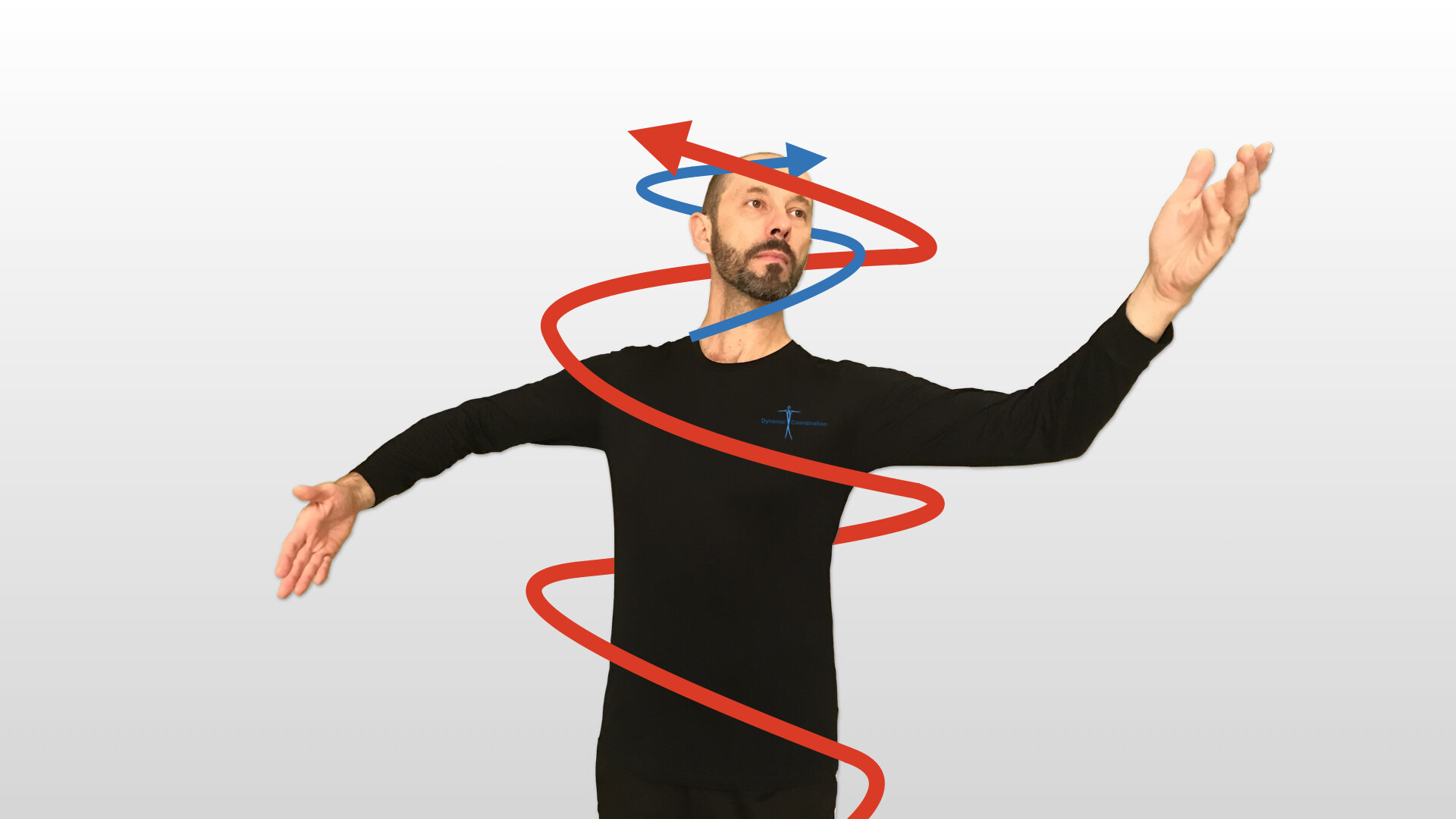All tagged Dart Procedures
Spiral arrangement of human voluntary musculature is not limited to the torso and neck, but it also continues into the limbs. In this article, we will explore how spirals in the arms help us achieve a stable, yet flexible dance hold.
The spiral arrangement of our musculature gives us the opportunity for a continuous, smooth movement. The opposing spirals give us the stability and support needed to perform many tasks, from walking to complicated dance choreography.
Done slowly and mindfully, the movements presented here, can be used as a morning warmup, midday pick-me-up, or an evening wind down. Based on the principles of the Alexander Technique, contemporary dance, and Developmental Movement, this 30 minute class is all you need to keep your back limber and strong.
Spiraling is at the core of basic ballroom technique. The idea of Contrary Body Movement (CBM) is basically a spiral. Every turn in ballroom technique is initiated by CBM, or spiral. We will demonstrate this idea by showing parallels between Dart roll on the floor and Double Reverse Spin.
In order to better understand this interplay between different body parts, I will introduce the concept of primary and secondary curves, and demonstrate how viewing the movement through this lens can improve not only posture, but also give dancing power, fluidity, and control.
Most people who spend the majority of their day sitting, tend to slump or hunch. This exercise will provide the antidote to this habit. It will help you elongate your spine and tone your back muscles, making you more aware of your postural habits.







